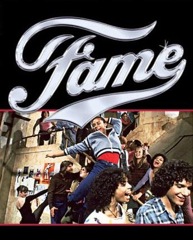main: December 2008 Archives
No matter what the ideal many people would like to see, arts education is provided by any number of people, in a variety of ways, including arts teachers, classroom and subject area teachers, teaching artists, parents, and volunteers; it's the way things have developed (see Big Bang post).

So, when you read this article, it's all the more important to consider that the instruction provided by this network is essentially a leg of the table. For the moment, it's about a freeze on spending. Here's the link and the article:
Arts Groups Try to Rally Support for School Funding, LA Times Blogs
They both fell victim to the Madoff scandal--The $50 billion Ponzi scheme.
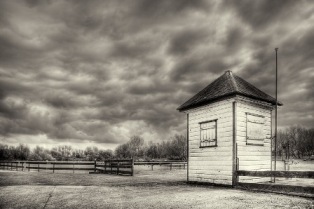 Picower I knew well. The Center for Arts Education had been supported generously by Picower for a number of years. They were a tough group of grantmakers, who asked difficult questions, did some very fine work in a number of areas including education, and always kept their grantees honest.
Picower I knew well. The Center for Arts Education had been supported generously by Picower for a number of years. They were a tough group of grantmakers, who asked difficult questions, did some very fine work in a number of areas including education, and always kept their grantees honest. There is something about the obliteration of these funders that is just stunning. All of the sudden, they're gone. Dissolved. Doors shut. It's very sad, particularly for the fine people that worked at these foundations. Bob Crane, the head of JEHT was one of the most well liked foundation executives around. For many years previous to JEHT, he ran the Mertz Gilmore Foundation.
The web of philanthropic support, like everything else in this economy, is changing in ways that are difficult to understand and predict. Perhaps the worst case scenarios are the best approach, at least for the time being. Even though it is said that you cannot cut to success, I think we're heading into unchartered territory.
Last week I heard from the Greentree Foundation, another long-time supporter. They've converted to an operating foundation, have taken the same hit as everyone else, and have decided to get out of the education funding business altogether. I got a check representing a "terminal grant."
More and more people are thinking about President Elect Obama's stimulus plan and how it will reach into the arts field. An early Obama arts platform referenced an "artist corps." And indeed, Kiff Gallagher is moving his Music National Service Initiative (MNSi) forward. MNSi recently received a $500,000 grant from the Hewlett Foundation. Many are hopeful that something broader will be done to blunt the blow that practically everyone fears for FY10.
For the arts education field, the hits are coming from many different directions. The schools are looking at significant budget cuts, which will in turn lead to a reduction in contracted services. Pound for pound the early cuts will be to contracted services, certainly before faculty. Most arts education organizations are in fact a type of service provider, so such cuts, combined with cuts from foundations, corporations, government, and individuals, are concocting a brew that has not been seen for quite a while, if ever.
Me? I am already thinking primarily about what it takes for an organization to survive such a brew. Can you cut to survival? That's another story entirely.
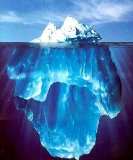 A month or so ago I wrote about cuts to the New York State Council on the Arts, as proposed by Governor Paterson. The cuts fell through at that time, due to political wrangling related to which party would be in the majority when, in the New York State Senate. A convoluted sentence for a convoluted occurrence. And, a long story.
A month or so ago I wrote about cuts to the New York State Council on the Arts, as proposed by Governor Paterson. The cuts fell through at that time, due to political wrangling related to which party would be in the majority when, in the New York State Senate. A convoluted sentence for a convoluted occurrence. And, a long story. This week the Governor announced a proposed cut of 20 percent to NYSCA for next year's budget, as well as calling again for a $7 million mid-year cut, which due to the timing of the mid-year cut, would make the cut in a bad government style, leaving those who had grants made early in the year held harmless, while those who were to be part of what were suspended October and December grant panels zeroed out. That's the difficulty of the mid-year cut: timing makes for inequity.
I remember the once great California Arts Council. I remember a number of years ago when its budget was reduced to something along the lines of $1 million. The arts field in New York is going to have to gear up for a fight. This is just the tip of the iceberg and if we don't fight now, we will lose that much more.
Here's a little bit of what's out there:
A Bloodless Budget, by Michael McMahon
 Once upon a time, most public schools had substantial arts education, with music and art most often recognized as the formal, official art forms. Dance and theater more often appeared as extracurricular activities, i.e., drama club. For many, many years, classroom teachers were expected to be able to teach the art forms. Primary school teachers were required to have a rudimentary knowledge of the piano, and teach dance, art, music, and drama in grades K-6. Many systems did not offer arts specialists licenses in the primary grades until the late 20th century.
Once upon a time, most public schools had substantial arts education, with music and art most often recognized as the formal, official art forms. Dance and theater more often appeared as extracurricular activities, i.e., drama club. For many, many years, classroom teachers were expected to be able to teach the art forms. Primary school teachers were required to have a rudimentary knowledge of the piano, and teach dance, art, music, and drama in grades K-6. Many systems did not offer arts specialists licenses in the primary grades until the late 20th century.The emergence of the true comprehensive high school as envisioned by James Conant starting in 1959, gave great cause for arts education to expand, as a broader curriculum with expanded teaching staffs created a greater supply of secondary level arts education than ever before.
This period was fairly simple in terms of the variety of approaches to instruction, and indeed the architecture of K-12 arts education. School faculty taught the arts; arts organizations enhanced this instruction. Most of the approach was disciplined-based; little was integrated. The teaching artist as formal entity had not yet appeared and arts education was dominated by traditional Western forms. In many ways it parallels the overall arts field itself: the forms were well defined and there were fewer of them. The modes of distribution and dissemination were much, much more limited.
The big bang occurred in the 70's, when a combination of a difficult economy, back-to-basics movement, and other assorted and sundry pressures and reforms created a gradual decline in arts education, particularly in the large urban school systems.
The big bang led to an expansion in what had been a relatively minor area in the non-profit arts sector: the arts education organization. I guess you can say the arts education organization as we know it was created during this big bang. In addition, we saw an expansion of arts education departments within arts organizations.
In many ways the big bang can be best observed and understood through the wide array of approaches to instruction that occurred in its aftermath: arts integrated across the curriculum; aesthetic education; youth development programs; and more. Add to this the emergence of the teaching artist, and you've got quite a different lot today than in 1959. Arts education split into many different pieces, much of which continues to cause great debate among practitioners.
At the same time, the arts as we know it have changed dramatically too. The field is much bigger, the modes of dissemination have changed drastically, the ways in which we categorize the various disciplines has changed dramatically, including new categories as well as the blending of categories. Thanks to technology, people can create art as never before, in their own homes and share it with a world in ways unimaginable 30 years ago. For instance, you can learn to compose, in your home, without a teacher, without coming in contact with musicians--without playing a traditional instrument.
I guess you could also liken the change to Humpty Dumpty. That's right, all the kings horses and all the kings men couldn't put arts education together again.
While I don't question the importance of quality, I do think that some of the discussions about quality track to this big bang. The pursuit of quality through instructional materials, through standards, through training, through compliance, and so much more.
On one hand, it's remarkable, for many of those driving education policy and even leading school systems don't give a damn about quality: they care about numbers. Metrics define the quality. And, in some ways you can't blame them. It's much harder to pursue quality through the lens of the art of teaching and learning. NCLB attempts to do this, from the perspective of teacher quality, through metrics associated with credentials, i.e., "how many teachers are teaching out of license?" Real teachers and administrators, practitioners, will tell you that approach doesn't do much for understanding quality. Others want to judge teaching quality by the scores on standardized tests. Still others have taken a much tougher road: at one point the Dayton, Ohio teachers union developed a significant peer review system.
Can you tell quality of an orchestra by how many subs are hired or how many tickets are sold? Does the short-term interest in an artist really tell us about the quality of the work?
In the name of quality, I've seen first-hand the attempts to bring back the architectures of the fifties, the structure of certified arts teachers, enhanced by teaching artists and arts organizations, and while progress has been made in many places, it's still a Humpty-Dumpty situation: it's a different field, that continues to change just as the arts continue to change. It can never be put back together again, the promise is in the reshaping, the rethinking, and I believe in finding ways to create a virtuous cycle between teaching and learning in arts and education, to practice in the art forms themselves, however you may define them. Another way of putting it would be to ask how certain qualities of art making, artistic sensibilities--ways of thinking and knowing, can positively affect education, and vice versa.

Lindsay Price writes: As I've become more involved with teachers and with students, it frightens me (which is overdramatic to be sure, but it's true) how numbers conscious boards are. How teachers and students are being held to some bizarre count and the elements that the arts brings to a well rounded education are tossed aside.
We can never go back, but how do we move forward? How is it possible to make bean counters see the value in arts education in a student?
Education seems to be very trend oriented. I think that the reliance on metrics should soften, and that the pendulum will shift to something more favorable. I also think that the wave of let's reform the schools so the function like corporations will wane, as more and more people see the good and bad of an unfettered free market and the corporate culture.
I am
thrilled to present my first guest blogger on Dewey21c: David Shookhoff.
His biography appears at the bottom of this post, but I want to add my own
quick thought about David: I can't think of any one person in the very large
arts education community in
Widening Perspective to Narrow the Gap
By David ShookhoffLast week
Arts Journal hosted a debate on the question, "Will our culture suffer if we
don't do more to teach the arts?"
Sixteen distinguished figures from the worlds of the arts and arts
education were invited to blog on the topic over five days. Given the size and vagueness of the question
(next time better and more definitions, please?), the posts were in turn
enlightening, exasperating, informative, incomprehensible, thoughtful, and
provocative.
What struck
me was that the unacknowledged subject of much of the discussion had little to
do with the arts. Many of the posts were
in effect addressing the under-resourcing of urban public schools, not just in
the arts but in every area. To be sure,
this idea surfaced from time to time during the discussion, as when bloggers
like
Anyone who
spends anything like equal amounts of time in city, private, and suburban
schools, as I do, cannot help be struck by the disparities. It's more tedious than difficult to cite striking,
depressing instances. Here's one:
One of my
teaching artists is doing musical theatre residencies at two high schools. One is a long-established, well-regarded
small school serving "at-risk" students on New York's Lower East Side; the
other is New Rochelle High School, serving a middle and working-class community
about a half hour's commute from midtown Manhattan. My artist requested an electronic keyboard at
both schools. At the NYC school, the
principal and teacher -- caring, concerned, smart, and supportive -- scratched
their heads and said "I think we have one, maybe in the custodian's closet, but
the battery's dead and we lost the power cord several years ago." At
And as Bob
Morrison put it in a comment, "The economic condition of a community [is] not a
factor" in predicting the degree of support for the arts, an assertion
confirmed by my experience in New Rochelle HS; its student body is far from
affluent (unlike its more famous neighboring schools in Scarsdale and
Mamaroneck), but it nonetheless saw fit to build a two-story state-of-the-art
performing and visual arts wing a few years ago, replete with dark rooms,
kilns, a sculpture studio, a black box theater with flexible seating and a computer-controlled
light board, etc., etc.
Again, the
disparities in arts resources and classes are only one small part of the
story. All you have to do is show up at
the respective front doors and the differences leap out: the paint jobs inside
and outside the buildings, the state of the physical plants, the food in the
cafeterias, the amenities in the teachers' lounges, the gyms (good luck finding
one in far too many of the city's schools).
An article in today's New York
We have to
view the disparities between suburban and private education on the one hand and
the city schools on the other, not as an arts education problem but as an
education problem. It seems much too
parochial, even trivial, to worry about whether the inadequacy of teaching and
learning in the arts will negatively affect "our culture," when in fact American
society is imperiled by so many other factors as well, most in some way related
to the deficiencies in so many urban schools.
As David
O'Fallon and Dennie Palmer Wolf suggested in thoughtful comments to the blog,
we need to consider these issues in terms of the fundamental purposes of
education. We have to be thinking about how
to enable kids to develop the capacities they need to participate fully in a
democratic society: to evaluate
information and opinions, to construct a logical argument, to imagine things as
they might be otherwise, to invent, to be alert and attentive, to make
connections and observe patterns, and to take pleasure in all that our culture
has to offer, including the arts in whatever forms they choose to encounter
them. To those ends, we need to think
about how to equitably allocate resources, human and material, of all kinds to
all our children, wherever they happen to live.
About David Shookhoff
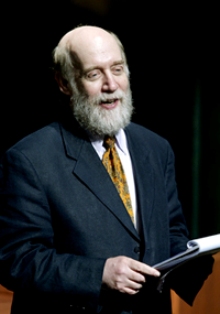
In addition, a handful of select private schools have abolished their Advanced Placement Courses, and paid $40,000 a piece to have Ivy League professors develop their Advanced Topics Courses.
Also mentioned in this article is a network of public and private high schools which do not "teach to the test." The network can be found here: ExcellencewithoutAP.org
This is all rather extraordinary, in light of narrowed curriculum and kill and drill found in so many public high schools, not to mention middle and elementary schools too.
Of course, most if not all of these schools do not have to deal with NCLB, as they do not receive Title I money.
I think that the glaring discrepancy between say Millburn High School in Essex County, New Jersey, only 35 minutes from New York City, and practically all of the New York City public high schools, save the few exceptions that prove the rule, tells you quite a bit about what the equity issue is all about.
It's exciting to see the educators in these schools expand opportunities for learning, essentially broadening the curriculum and approach in a way that on the surface appears to have a great richness in content. Most of what you hear from those pushing metrics in schools, is that the high expectations of testing is what will reform education. Here we have high expectations in terms of coursework and content. One can only hope that this is a trend that will reach the many public high schools were such an approach could really lift all boats.
Here's a section from ExcellencewithAP.org:
Why Drop AP?
The reasons for moving beyond AP vary from school to school. Only one belief is shared by all of the schools listed on this site: that a locally designed curriculum better serves their students than a curriculum leading to a nationally-administered standardized test. The most common reasons why schools do not teach AP courses include the desire to create:
A Mission-Driven Curriculum
When schools have a mission statement at the center of their efforts, questions often arise as to whether the AP curriculum is the best possible way to fulfill that mission. Haverford School's decision to move away from AP grew out of reflection on its mission to teach students "to think critically and communicate effectively." The school established a partnership with the Decision Education Foundation and revamped its curriculum to better reflect the link between critical thinking and decision-making. (See "Better Decisions - Better Lives" in Independent School magazine, Summer 2007. http://www.nais.org/publications/ismagazinearticle.cfm?Itemnumber=149995&sn.ItemNumber=145956&tn.ItemNumber=145958
A More Hands-On Curriculum
Preparation for an AP exam requires coverage of a large amount of factual content. Such coverage often creates an imperative for teacher-centered rather than student-centered learning. Courses that cover fewer topics in greater depth are more compatible with hands-on learning. At Beaver Country Day School, students in "Children and Homelessness" do weekly work at a homeless shelter. In 2005-2006, students at Germantown Friends School collaborated with those at Girard College in a year-long research project examining evolutionary relationships between different organisms by comparing gene and/or protein sequences.
A More Inclusive Curriculum
In the humanities and social sciences, the AP curriculum is limited to conventional surveys such as European History, U.S. History, World History, Comparative Government, etc. Many schools want students to pursue in-depth study of topics such as "Philosophies of the East" (Sandia Preparatory School), "The Great Divide: Race and Ethnicity in America (Scarsdale High School), "Voices from the Middle East" (Phillips Exeter Academy), and "Ethics of the Twenty-First Century" (Crossroads School).
A Thematic or Interdisciplinary Curriculum
AP courses and exams are organized around a body of knowledge in traditional disciplines. Some schools would rather teach courses organized around analytical themes that cross disciplinary lines. Examples include "Digital Stories: Oral Traditions and Interactive Fiction" (Concord Academy), "Myth, Psychology, and Film" (St. Andrews-Sewanee School), "Global and Local Change: Critical Environmental Issues" (Francis W. Parker School), and "Algorithmic Art" (Beaver Country Day School).
Extended Off-Campus Projects
In most schools, early May is devoted to AP exams, and after the exams are over, late May and early June are of dubious value. Many non-AP schools devote the month of May to a hands-on project. At Catlin Gabel School, graduating seniors complete a five-week-long Senior Project, which in a recent year featured one student doing glaucoma research at an eye institute and another studying shoe design at a local firm. At Scarsdale High School, students complete the Senior Options program, which consists of a month-long individual or group project that culminates in a public presentation.
A Teacher-Designed Curriculum
Many non-AP schools see value in home-grown curriculum for its own sake. Passion for learning begins with the teacher. When a teacher designs a course, learning is a voyage of joint discovery rather than an effort to cover topics ordained by an unseen authority. In locally-designed courses, teacher and student can share ownership of the learning process to an extent that is impossible with a standardized curriculum.

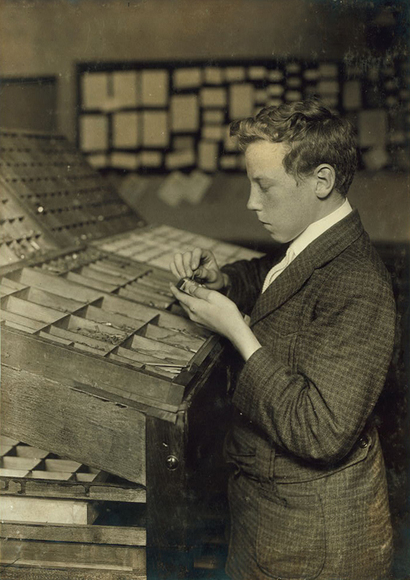 Okay, it's back to Dewey21c, in the long shadow of the five-day online discussion about arts education.
Okay, it's back to Dewey21c, in the long shadow of the five-day online discussion about arts education. In the next couple of days, my first guest blogger will appear. I am lining others up as well...
I wanted to get back on track with my regular blog by moving fairly far afield from the topics covered in the discussion.
Years ago, there were two tracks in high school: academic and vocational-technical (Vo-Tech).
Actually, there was a third track: drop-out. Some argue there still is that third track, although years ago not much attention was given to the high school drop-out rate. Students were often placed in one track versus the other, based on a number of factors including what was then called "aptitude.". My dad ended up Automotive High School, a Vo-Tech track. My mom went to Tilden High School, an academic track.
Vo-Tech withered in the vine for a quite a while: there were many school districts that had turned a blind eye to this important option in secondary education. Today, your father's Vo-Tech is now Career and Technical Education (CTE).
There's a quiet revolution/evolution going on in education, thanks to CTE. The combination of high academic standards, significant professional development for teachers, required internships, mentorships, extensive interactions with professional in related fields, including industry partnerships, has led to high test scores, motivated students, strong school cultures, and an inkling of what the future of education could hold. And, this future is not "drill and kill." It's in the realm of the permeable school walls, as Susan Scalfani and Rudy Crew have written quite a bit about. And, there is a great opportunity for the creative sector here.
Finally, there are some key "soft skills" that are included in CTE, including career education, something I am going to write more about in the future.
Here are a couple of reports, work a look-see:
Schools That Work, by The Center for an Urban Future
The Future is Now, NYC Comptroller's Office
Next Generation Career and Technical Education in New York City, NYC Mayoral Task Force
What it takes to Succeed in the 21st Century and How New Englanders are Faring, Jobs for the Future
Blogroll
AJ Ads
AJ Blogs
AJBlogCentral | rssculture
Terry Teachout on the arts in New York City
Andrew Taylor on the business of arts & culture
rock culture approximately
Laura Collins-Hughes on arts, culture and coverage
Richard Kessler on arts education
Douglas McLennan's blog
Dalouge Smith advocates for the Arts
Art from the American Outback
For immediate release: the arts are marketable
No genre is the new genre
David Jays on theatre and dance
Paul Levy measures the Angles
Judith H. Dobrzynski on Culture
John Rockwell on the arts
innovations and impediments in not-for-profit arts
Jan Herman - arts, media & culture with 'tude
dance
Apollinaire Scherr talks about dance
Tobi Tobias on dance et al...
jazz
Howard Mandel's freelance Urban Improvisation
Focus on New Orleans. Jazz and Other Sounds
Doug Ramsey on Jazz and other matters...
media
Jeff Weinstein's Cultural Mixology
Martha Bayles on Film...
classical music
Fresh ideas on building arts communities
Greg Sandow performs a book-in-progress
Harvey Sachs on music, and various digressions
Bruce Brubaker on all things Piano
Kyle Gann on music after the fact
Greg Sandow on the future of Classical Music
Norman Lebrecht on Shifting Sound Worlds
Joe Horowitz on music
publishing
Jerome Weeks on Books
Scott McLemee on books, ideas & trash-culture ephemera
theatre
Wendy Rosenfield: covering drama, onstage and off
Chloe Veltman on how culture will save the world
visual
Public Art, Public Space
Regina Hackett takes her Art To Go
John Perreault's art diary
Lee Rosenbaum's Cultural Commentary
Tyler Green's modern & contemporary art blog
